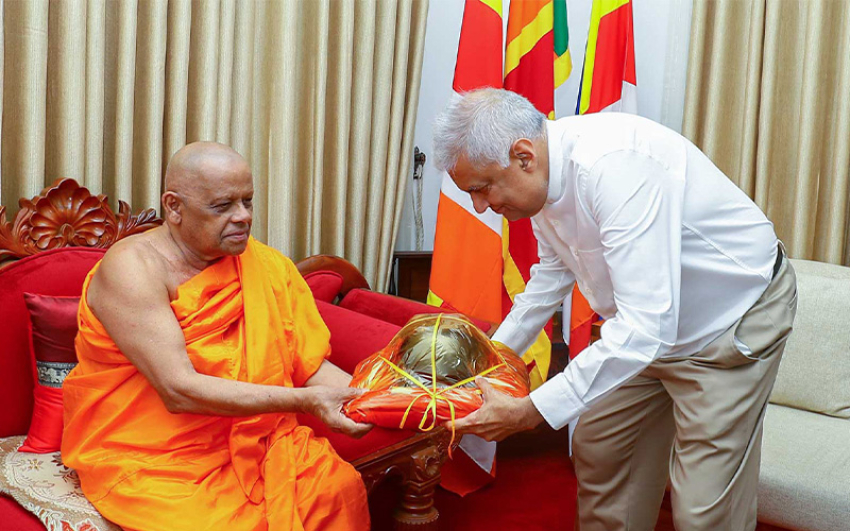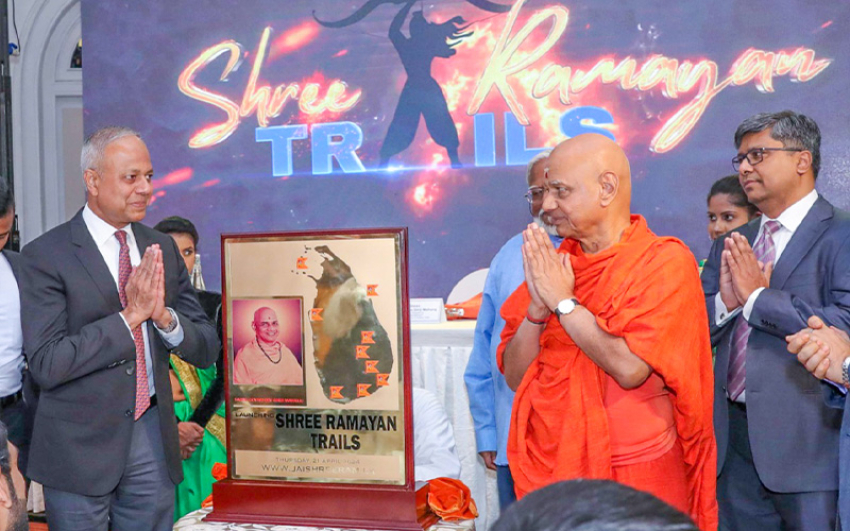VA
Japan’s deep connection to childish relationships
By Amanda Alvarez
On a cold December night in the late 1950s, psychoanalyst Takeo Doi (土居 健郎) was on call at the hospital when he received a seemingly inconsequential visit. A patient sheepishly approached Doi unannounced to ask if he should go home for the New Year holidays. Perplexed as to why the patient should need his advice and in no mood to engage or empathise Doi replied, “It’s up to you”. Perhaps the demand for special treatment appeared narcissistic or overstepped an intimacy boundary, but whatever the reason, this blunt interaction provoked a new idea in Doi. The patient’s behaviour – pouting, wheedling, and submitting to the doctor’s authority – became a central part of an influential manifesto on the Japanese psyche.
Published in English in 1973, ‘The Anatomy of Dependence’ (甘えの構造) popularised the term amae as the key for “understanding not only of the psychological makeup of the individual Japanese but of the structure of Japanese society as a whole”. Classical amae is a childlike behaviour to obtain care that miht include whining, behaving in a spoiled manner or taking liberties with others.
A global concept?
“Amae appears in any relationship, at any age, and can be positive or negative,” says Kazuko Behrens (カズコベアレンズ), who has extensively studied amae in both her native Japan as well as in the US, where she is an associate professor of psychology at SUNY Polytechnic Institute. “It’s unique in Japan because one word takes care of so many phenomena, behaviours and interactions”, from a toddler crying to be picked up to a wife begging her husband for an expensive gift, “but amae exists everywhere beyond Japan and people can identify it in their lives, even if they didn’t know what to call it.”
Behrens sees reciprocal amae in TV shows like Seinfeld and Friends, where the characters come and go in each other’s apartments (and refrigerators). It’s the presumption that these kinds of behaviours are allowed between close friends that makes this amae.
It’s no coincidence that successful amae appeals often involve childish or naive overtures. “I frequently tell newcomers to Japan that... approaching someone on a street and briskly asking for directions, the response is likely to be a rabbit’s fright and flight,” says translator and longtime Japan resident John McCreery. “But approach looking confused and non-threatening and say, a bit plaintively, “I appear to be lost…” and the odds of a positive, helpful response rise sharply.”
Cuteness, timidity and pre-emptive apologies are also part of the copious signs, warnings and announcements one encounters in Japan. On train platforms or at construction sites, wide-eyed characters politely remind you to mind your manners and bowing figures ask you to forgive the disruption, while mascots offer guidance at stations, offices and stores. “People are primed to accept these kawaii [cute] objects because it tickles the amae instinct, begging your indulgence,” says Behrens.
A more coercive type of amae can occur in the workplace, for example if a boss makes excessive demands like expecting women employees to serve tea to visitors or clients. “Amae is not one thing,” says Behrens. “There’s been significant development from Doi’s definition [of prototypical amae between a mother and child] and now amae can be used in so many various contexts, including negative, where there are expectations that are unreasonable.”
Expectation plays a big role in amae. “It starts with the assumption that your amae will be accepted,” says Behrens. “But sometimes the receiver is not happy,” as in the case of Doi and his patient. Not all Japanese are welcoming or tolerant of amae or engage in it, nor do attempts at eliciting amae succeed 100 percent of the time, Behrens notes. “Learning how to read people, what is an appropriate level of amae, who is the appropriate person to engage with, this a significant experience of growing up in Japan,” she observes.
And amae is always a game of two: a woman might act coquettishly playful towards her partner to elicit affection or colleagues might trade complaints of work frustrations to establish rapport. “Mutually accepted amae, where both doer and acceptor agree on going a bit outside the rules or social norms, can be fun and lead to a renewed intimacy,” says Behrens. “Even adult children might do amae towards their aging parents, for example by asking for their help, to make them feel good and needed.”
But when amae goes wrong, it can lead to animosity or worse. It is “soft power... a means for the weaker party in a relationship, a child or employee, to elicit care or support from the stronger party,” says Christopher Harding, a senior lecturer in Asian history at the University of Edinburgh and author of Japan Story. But when wielded inappropriately, “it ends up being rather undemocratic, whether at home or at work.” Absolute adherence to amae can bolster hierarchical relationships and power imbalances. Behrens sees shades of amae in the abuses that catalysed the #MeToo movement and says that extreme demands under the guise of amae can be severely underreported in Japanese companies.
Egregious attempts at amae in adulthood may partly trace their roots to childhood rejection. Doi predicted children whose amae is not reciprocated would experience neediness and anxiety. Modern attachment theory and behavioural studies bear this out. “When you attend to a child every time [they cry], they will become secure, autonomous and more independent,” says Behrens. These children develop the confidence to explore the world, because they know they will be rescued if necessary. “But neglected ones, who cry themselves to sleep, they don’t know when their needs will be met, so they have less confidence and become more needy.”
Doi’s patient, for example, was completely capable of deciding to visit home for the holidays, but he wanted to shift this responsibility to the doctor. “Amae is for things you can do yourself, but assume or want someone else to do [for you], what level [of imposition] you can get away with,” Behrens emphasises. “The title [The Anatomy of Dependence] made people think that amae is dependence, which is helplessness, but amae is different from dependency.”
Dependency, immaturity and infantilisation nonetheless colour some facets of amae. In a society like Japan’s that values social harmony, these aspects have morphed into an adaptive behaviour that allows people to ask for help, strengthen human ties and even make inappropriate requests without the appearance of burdening others.
In Japan being treated like a child is normal and not insulting – Kumi Kuroda
“In Japan, being treated like a child is normal and not insulting,” says Kumi Kuroda (黒田 公美), a researcher in neuroscience and psychiatry who studies infant-parent bonding. “Amae is one way to escape from being an adult for a little while. It can provide an outlet for stress, because even adults need care or attention sometimes.”
This sometimes saccharine nature of amae points to its close lexical cousin, the word amai, meaning sweet, and invites parallels with another flavourful Japanese coinage, umami. Anyone around the world can experience the savoury taste of umami, even if they use the Japanese word to describe it. Similarly, “amae is more salient and more frequently experienced in Japan [but] can exist in cultures that have no word for it,” according to researchers who found similar interpretations and reactions to amae from both Japanese and Americans. Like umami, amae may just have been named in Japanese because people were more attuned to it in their daily experience.
People are primed to accept these kawaii objects because it tickles the amae instinct – Kazuko Behrens
“Japanese people value amae and notice when it is taken or given,” muses Kuroda.Behrens agrees: “Doi didn’t create amae, he just identified it to be unique to Japanese people."Amae is an evolving concept and is becoming more inclusive of different phenomena, with new targets that Doi didn’t expect”, for example inanimate kawaii objects. Like a favourite food, the sweet dependency of this concept ultimately invites us back to childhood and the warmth of a mother’s embrace.“Positive amae is a way to be childish and it’s OK,” says Kuroda. “Everyone was a child once and we still feel like children in our souls sometimes.”
An ancient way of doing business in Japan
By Yuko Komura (translated by Johanna Airth)
When we think of a Japanese tea ceremony (sadō), it invokes thoughts of a refined woman in a kimono, sitting on a tatami mat making matcha, carefully following detailed instructions of old. According to a 2016 census taken by the Statistics Bureau of Japan, 80% of tea ceremony participants are women. However, this idea of the tea ceremony being attributed to females is actually a recent development. Eight hundred years ago, when the matcha drinking culture was first imported via China, tea ceremonies were conducted by warriors and monks: in short, men.
Etsuko Kato, a cultural anthropologist who has written on the topic, explains how women came to perceive the tea ceremony as a skill that elevated their own social status.Students train endlessly to obtain perfection in otemae, the process of making tea and conducting the tea ceremony
Kato explains that after the Meiji Restoration in 1868, educated women turned to “the way of tea” in the hope of improving their femininity and refinement before marriage. Students train endlessly to obtain perfection in otemae: the process of making tea and conducting the tea ceremony. When guests are invited to a tea ceremony, the host’s expertise in the art is on display. At a time when women’s responsibilities were strictly limited to household affairs, conducting an elegant tea ceremony was an important way for cultured women to be socially acknowledged.
A ukiyo e print of a tea house ceremony (credit: Japan Art Collection (JAC)/Alamy Stock Photo)
As women’s social standing in the workspace progressed, there has been a marked decline in tea ceremony participation. According to the same census, the majority of women learning now are 50 years old and older. A cultural tradition without a young generation to pass it onto is yet another troubling omen of the ageing demographic in Japan.
But there has been a recent revival of this ancient art. A new wave, updated to reflect modern society, has quietly been established in the last ten years.
Sword-wielding warriors and the modern-day businesspeople
Kyūtō-Ryū is a new type of tea ceremony established in 2010. Kyūtō can refer to either a kitchenette or a hot water pot and reflects their chosen venue – the office canteen. Its concept is simply “the way of tea for the busy office worker.” Heading the movement is Hankyu Tanida, who has been working in an office for over 20 years. Her first encounter with the tea ceremony was through the comic book series “Hyougemono” (a silly person, or, an object with an interesting shape) by Yoshihiro Yamada. Set during the war-torn Sengoku era, this acclaimed manga comic depicts warriors who are passionate about the "ways of tea".
"Businesspeople are like the samurai of today, fighting against the stresses of work" (credit: Makoto Motomiya)
“Before I read the manga, I always thought of [the] tea ceremony to be a boring event in which fancy ladies drank tea,” Tanida reflects. “But even during the harrowing period of samurai warfare, where one could face death on any day, the warriors aimed to relieve stress and regain mental strength by committing to tea ceremony. In their way of life, I saw the businessperson of today, fighting against the stresses of work.”
I always thought of [the] tea ceremony to be a boring event in which fancy ladies drank tea
As he began to study tea ceremonies, Tanida decided to visit the famous tea room “Taian” in Kyoto, thought to be the creation of the acclaimed historical figure and tea master, Sen no Rikyū, who had a profound influence on the Japanese “way of tea” during the Azuchi-Momoyama Period.
“I had heard it was a small, two-tatami mat room,” Tanida recalls. “Yet somehow, it extended beyond its physical boundaries and into space. Naturally, I had high expectations. But when I actually saw it, I thought it small. Much too small. It was the same size as our office kitchenette. When I imagined myself making matcha in our kitchenette, it seemed so silly that I couldn’t stop laughing.”
Kyūtō-Ryū tea gathering held in the office kitchen (credit: Hiroyuki Fukura)
What Tanida thought was that “the way of tea should be free.” Tea rooms are required to be four tatami mats in size (about 6sqm); however, the warriors of the period were happy to be crammed into a space half that size. “That is when I realised that [the] tea ceremony isn’t solely about strict adherence to the rules. That its charm manifests when you break some of them.” When she went back to work, Tanida invited two of her colleagues to participate in a tea ceremony held in the office break room. It was the same kitchenette where she would make tea for her boss or heat up her bentō box for lunch in the microwave. Yet once sitting Japanese-style on the floor, the room seemed transformed, and it transported the host and his guests to another world. That was the beginning of the Kyūtō-Ryū tea ceremony.
A new-wave of office gatherings
The Kyūtō-Ryū, kitchenette-style tea ceremony, is conducted during lunch breaks, and Tanida believes there are three major benefits to his new-wave of tea ceremony.
Firstly, in two grams of powder for a so-called “light tea” matcha there is about 64mg of caffeine, which is comparable to a cup of coffee (10g of beans includes about 60mg of caffeine). Its stimulating effect is often used to help stave off the office afternoon lull. “The warriors would drink maccha before battle to psych themselves up,” Tanida explains.
Another reason is its social aspect. During a tea ceremony, participants intermingle regardless of job title. One of the rules in Kyūtō-Ryū is to take off any office ID cards from around the neck and set them aside before gathering. According to Tanida, this reflects the custom of the historical ceremonies, in which the samurai lay aside their swords – a symbol of their identity, before partaking in tea. “Through these tea gatherings,” Tanida says, “the samurai warriors would openly discuss weaponry and strategy, regardless of class and title. Many used these ceremonies as networking opportunities to further their careers.”
A tea gathering held in an antique shop in Osaka (credit: Kiyoe Akechi)
And lastly, at their own Kyūtō-Ryū gatherings, the participants use unusual tools that are perhaps not the “right” ones, according to tradition. Instead, they use anything that is around them to create an ambience, unique to their office.
In a cracked and stained coffee cup, I see the efforts of my colleagues
Traditionally, the tea-bowl into which the matcha is poured is a tool that draws much attention. Oftentimes the host would bring out bowls priced at hundreds of thousands yen (above £1,000). But at the Kyūtō-Ryū gatherings, participants use old coffee cups with their own charm. The expense report receipts pinned to the refrigerator serves as the kakejiku, a scroll that expresses the sentiment of that day’s ceremony.
Korean tea bowls were widely used in Japan during the Korean Joseon Dynasty. In the same spirit, a coffee cup is used in tea ceremonies today (credit: Junichi Kondo)
Tanida says, “through Rikyū’s philosophy of Wabi Tea, we seek the beauty in the used and simple, rather than the gorgeous. What is important is to express what the tool we use for tea stands for in its heart. In a cracked and stained coffee cup, I see the efforts of my colleagues. Once you share that story with your guests, you become one with them through the story.”
A light-hearted game
At the beginning, only three participants practised Kyūtō-Ryū tea ceremonies. And now through mutual friends and interest, this new style of tea ceremony has spread to other office kitchenettes. In the past there were tea parties conducted thousands of miles away in New York and London. Today, the group uses abandoned stations in the countryside, or dilapidated clubs near old onsen (hot springs) towns to meet for their tea ceremonies. Roughly 120 tea ceremonies have been held, with over 2400 participants.
The way of tea has changed drastically in the past few decades
Professor Hiroshi Yamaguchi, the head of global media studies at Komazawa University in Tokyo, believes that “by ignoring the traditional ways, Kyūtō-Ryū has succeeded in turning the essence of the tea gathering into a fun parody, something light-hearted like a game.” Yamaguchi himself participated as a guest in 2013, and has since become a managing member of the group.
A participant holds a cup she has used since childhood. The retro anime on it gives a feeling of nostalgia (credit: Sakiko Kishimoto)
“The environment surrounding the way of tea has changed drastically in the past few decades,” Yamaguchi explains. “After the post-war bubble of Japan, the ‘suppliers’ of tea, its teachers, and cup-makers had the upper hand, as there was demand for expensive lessons and tea bowls. However, as the perceived value of tea tools declines, the power dynamic shifts from supplier to consumer, i.e: the participants. The way of tea must evolve such that the participants enjoy the ceremony, otherwise there will be less and less demand for the tradition.”
At Kyūtō-Ryū gatherings, novices and traditionalists mingle together as guests, and share their own ways of enjoying tea.
“Through our tea parties, I hope that more and more people become interested in the way of tea. In Japan, matcha is considered an exquisite tea. I hope one day it [will] become another option to coffee in the workplace,” says Tanida.
Power sharing, babyish begging or narcissistic manipulation, amae can be all this and more, and chances are you’ve done it too.
Author image
By Amanda Alvarez
On a cold December night in the late 1950s, psychoanalyst Takeo Doi (土居 健郎) was on call at the hospital when he received a seemingly inconsequential visit. A patient sheepishly approached Doi unannounced to ask if he should go home for the New Year holidays. Perplexed as to why the patient should need his advice and in no mood to engage or empathise Doi replied, “It’s up to you”.
Perhaps the demand for special treatment appeared narcissistic or overstepped an intimacy boundary, but whatever the reason, this blunt interaction provoked a new idea in Doi. The patient’s behaviour – pouting, wheedling, and submitting to the doctor’s authority – became a central part of an influential manifesto on the Japanese psyche.
Published in English in 1973, ‘The Anatomy of Dependence’ (甘えの構造) popularised the term amae as the key for “understanding not only of the psychological makeup of the individual Japanese but of the structure of Japanese society as a whole”. Classical amae is a childlike behaviour to obtain care that might include whining, behaving in a spoiled manner or taking liberties with others.
Amae is a surprisingly diverse, everyday phenomenon (Credit: Getty Images)
Amae is a surprisingly diverse, everyday phenomenon that can be found beyond the shores of Japan (Credit: Getty Images)
A global concept?
“Amae appears in any relationship, at any age, and can be positive or negative,” says Kazuko Behrens (カズコベアレンズ), who has extensively studied amae in both her native Japan as well as in the US, where she is an associate professor of psychology at SUNY Polytechnic Institute. “It’s unique in Japan because one word takes care of so many phenomena, behaviours and interactions”, from a toddler crying to be picked up to a wife begging her husband for an expensive gift, “but amae exists everywhere beyond Japan and people can identify it in their lives, even if they didn’t know what to call it.”
Behrens sees reciprocal amae in TV shows like Seinfeld and Friends, where the characters come and go in each other’s apartments (and refrigerators). It’s the presumption that these kinds of behaviours are allowed between close friends that makes this amae.
It’s no coincidence that successful amae appeals often involve childish or naive overtures. “I frequently tell newcomers to Japan that... approaching someone on a street and briskly asking for directions, the response is likely to be a rabbit’s fright and flight,” says translator and longtime Japan resident John McCreery. “But approach looking confused and non-threatening and say, a bit plaintively, “I appear to be lost…” and the odds of a positive, helpful response rise sharply.”
Cuteness, timidity and pre-emptive apologies are also part of the copious signs, warnings and announcements one encounters in Japan. On train platforms or at construction sites, wide-eyed characters politely remind you to mind your manners and bowing figures ask you to forgive the disruption, while mascots offer guidance at stations, offices and stores. “People are primed to accept these kawaii [cute] objects because it tickles the amae instinct, begging your indulgence,” says Behrens.
Behrens sees reciprocal amae in TV shows like Friends (Credit: Alamy)
Shows like Seinfeld and Friends, where the characters come and go in each other’s apartments, show similar amae qualities (Credit: Alamy)
A more coercive type of amae can occur in the workplace, for example if a boss makes excessive demands like expecting women employees to serve tea to visitors or clients. “Amae is not one thing,” says Behrens. “There’s been significant development from Doi’s definition [of prototypical amae between a mother and child] and now amae can be used in so many various contexts, including negative, where there are expectations that are unreasonable.”
Also from Japan 2020:
• A samurai-inspired office ritual?
• A shrinking town with big ambitions
• The car-crash crisis in ageing Japan
Expectation plays a big role in amae. “It starts with the assumption that your amae will be accepted,” says Behrens. “But sometimes the receiver is not happy,” as in the case of Doi and his patient. Not all Japanese are welcoming or tolerant of amae or engage in it, nor do attempts at eliciting amae succeed 100 percent of the time, Behrens notes. “Learning how to read people, what is an appropriate level of amae, who is the appropriate person to engage with, this a significant experience of growing up in Japan,” she observes.
And amae is always a game of two: a woman might act coquettishly playful towards her partner to elicit affection or colleagues might trade complaints of work frustrations to establish rapport. “Mutually accepted amae, where both doer and acceptor agree on going a bit outside the rules or social norms, can be fun and lead to a renewed intimacy,” says Behrens. “Even adult children might do amae towards their aging parents, for example by asking for their help, to make them feel good and needed.”
A dark side
But when amae goes wrong, it can lead to animosity or worse. It is “soft power... a means for the weaker party in a relationship, a child or employee, to elicit care or support from the stronger party,” says Christopher Harding, a senior lecturer in Asian history at the University of Edinburgh and author of Japan Story. But when wielded inappropriately, “it ends up being rather undemocratic, whether at home or at work.” Absolute adherence to amae can bolster hierarchical relationships and power imbalances. Behrens sees shades of amae in the abuses that catalysed the #MeToo movement and says that extreme demands under the guise of amae can be severely underreported in Japanese companies.
Amae in adulthood may trace their roots to childhood rejection (Credit: Getty Images)
Amae may be a way for adults to escape from the stress of their responsibilities but may also have its roots in the way they were treated as children (Credit: Getty Images)
Egregious attempts at amae in adulthood may partly trace their roots to childhood rejection. Doi predicted children whose amae is not reciprocated would experience neediness and anxiety. Modern attachment theory and behavioural studies bear this out. “When you attend to a child every time [they cry], they will become secure, autonomous and more independent,” says Behrens. These children develop the confidence to explore the world, because they know they will be rescued if necessary. “But neglected ones, who cry themselves to sleep, they don’t know when their needs will be met, so they have less confidence and become more needy.”
Doi’s patient, for example, was completely capable of deciding to visit home for the holidays, but he wanted to shift this responsibility to the doctor. “Amae is for things you can do yourself, but assume or want someone else to do [for you], what level [of imposition] you can get away with,” Behrens emphasises. “The title [The Anatomy of Dependence] made people think that amae is dependence, which is helplessness, but amae is different from dependency.”
Dependency, immaturity and infantilisation nonetheless colour some facets of amae. In a society like Japan’s that values social harmony, these aspects have morphed into an adaptive behaviour that allows people to ask for help, strengthen human ties and even make inappropriate requests without the appearance of burdening others.
In Japan, being treated like a child is normal and not insulting – Kumi Kuroda
“In Japan, being treated like a child is normal and not insulting,” says Kumi Kuroda (黒田 公美), a researcher in neuroscience and psychiatry who studies infant-parent bonding. “Amae is one way to escape from being an adult for a little while. It can provide an outlet for stress, because even adults need care or attention sometimes.”
Amae points to its close cousin, the word amai, meaning sweet (Credit: Alamy)
The concept of Amae has evolved into something far more sweet than Doi had originally intended (Credit: Alamy)
This sometimes saccharine nature of amae points to its close lexical cousin, the word amai, meaning sweet, and invites parallels with another flavourful Japanese coinage, umami. Anyone around the world can experience the savoury taste of umami, even if they use the Japanese word to describe it. Similarly, “amae is more salient and more frequently experienced in Japan [but] can exist in cultures that have no word for it,” according to researchers who found similar interpretations and reactions to amae from both Japanese and Americans. Like umami, amae may just have been named in Japanese because people were more attuned to it in their daily experience.
People are primed to accept these kawaii objects because it tickles the amae instinct – Kazuko Behrens
“Japanese people value amae and notice when it is taken or given,” muses Kuroda.
Behrens agrees: “Doi didn’t create amae, he just identified it to be unique to Japanese people.
"Amae is an evolving concept and is becoming more inclusive of different phenomena, with new targets that Doi didn’t expect”, for example inanimate kawaii objects. Like a favourite food, the sweet dependency of this concept ultimately invites us back to childhood and the warmth of a mother’s embrace.
“Positive amae is a way to be childish and it’s OK,” says Kuroda. “Everyone was a child once and we still feel like children in our souls sometimes.”
A shrinking town with big ambitions
With falling population, Kamikatsu needed to find ways to revitalise its community. One man came up a plan to combine the area's natural surroundings with its ageing workforce.
The rural town of Kamikatsu in western Japan is shrinking. Faced with a population that's both ageing and declining, the community is having to come up with ways to keep its local economy running.
Entrepreneur Tomoji Yokoishi came up with an idea. His plan was to sell leaves from the area's beautiful trees as decorative garnishes to high-end restaurants all over Japan. And so, the company Irodori was founded.
Over 300 varieties of leaves are freshly picked by local farmers (mostly female) who benefit not only from being able to generate an income but also upskill their knowledge of technology - using a computer and a tablet to fill orders.
At one point, people were afraid that all Kamikatsu would be left with is mountains and its elderly residents. But this community is proving that, for now, that's enough.
Share on Facebook
Power sharing, babyish begging or narcissistic manipulation, amae can be all this and more, and chances are you’ve done it too.
On a cold December night in the late 1950s, psychoanalyst Takeo Doi (土居 健郎) was on call at the hospital when he received a seemingly inconsequential visit. A patient sheepishly approached Doi unannounced to ask if he should go home for the New Year holidays. Perplexed as to why the patient should need his advice and in no mood to engage or empathise Doi replied, “It’s up to you”.
Perhaps the demand for special treatment appeared narcissistic or overstepped an intimacy boundary, but whatever the reason, this blunt interaction provoked a new idea in Doi. The patient’s behaviour – pouting, wheedling, and submitting to the doctor’s authority – became a central part of an influential manifesto on the Japanese psyche.
Published in English in 1973, ‘The Anatomy of Dependence’ (甘えの構造) popularised the term amae as the key for “understanding not only of the psychological makeup of the individual Japanese but of the structure of Japanese society as a whole”. Classical amae is a childlike behaviour to obtain care that might include whining, behaving in a spoiled manner or taking liberties with others.
Amae is a surprisingly diverse, everyday phenomenon (Credit: Getty Images)
Amae is a surprisingly diverse, everyday phenomenon that can be found beyond the shores of Japan (Credit: Getty Images)
A global concept?
“Amae appears in any relationship, at any age, and can be positive or negative,” says Kazuko Behrens (カズコベアレンズ), who has extensively studied amae in both her native Japan as well as in the US, where she is an associate professor of psychology at SUNY Polytechnic Institute. “It’s unique in Japan because one word takes care of so many phenomena, behaviours and interactions”, from a toddler crying to be picked up to a wife begging her husband for an expensive gift, “but amae exists everywhere beyond Japan and people can identify it in their lives, even if they didn’t know what to call it.”
Behrens sees reciprocal amae in TV shows like Seinfeld and Friends, where the characters come and go in each other’s apartments (and refrigerators). It’s the presumption that these kinds of behaviours are allowed between close friends that makes this amae.
It’s no coincidence that successful amae appeals often involve childish or naive overtures. “I frequently tell newcomers to Japan that... approaching someone on a street and briskly asking for directions, the response is likely to be a rabbit’s fright and flight,” says translator and longtime Japan resident John McCreery. “But approach looking confused and non-threatening and say, a bit plaintively, “I appear to be lost…” and the odds of a positive, helpful response rise sharply.”
Cuteness, timidity and pre-emptive apologies are also part of the copious signs, warnings and announcements one encounters in Japan. On train platforms or at construction sites, wide-eyed characters politely remind you to mind your manners and bowing figures ask you to forgive the disruption, while mascots offer guidance at stations, offices and stores. “People are primed to accept these kawaii [cute] objects because it tickles the amae instinct, begging your indulgence,” says Behrens.
Behrens sees reciprocal amae in TV shows like Friends (Credit: Alamy)
Shows like Seinfeld and Friends, where the characters come and go in each other’s apartments, show similar amae qualities (Credit: Alamy)
A more coercive type of amae can occur in the workplace, for example if a boss makes excessive demands like expecting women employees to serve tea to visitors or clients. “Amae is not one thing,” says Behrens. “There’s been significant development from Doi’s definition [of prototypical amae between a mother and child] and now amae can be used in so many various contexts, including negative, where there are expectations that are unreasonable.”
Also from Japan 2020:
• A samurai-inspired office ritual?
• A shrinking town with big ambitions
• The car-crash crisis in ageing Japan
Expectation plays a big role in amae. “It starts with the assumption that your amae will be accepted,” says Behrens. “But sometimes the receiver is not happy,” as in the case of Doi and his patient. Not all Japanese are welcoming or tolerant of amae or engage in it, nor do attempts at eliciting amae succeed 100 percent of the time, Behrens notes. “Learning how to read people, what is an appropriate level of amae, who is the appropriate person to engage with, this a significant experience of growing up in Japan,” she observes.
And amae is always a game of two: a woman might act coquettishly playful towards her partner to elicit affection or colleagues might trade complaints of work frustrations to establish rapport. “Mutually accepted amae, where both doer and acceptor agree on going a bit outside the rules or social norms, can be fun and lead to a renewed intimacy,” says Behrens. “Even adult children might do amae towards their aging parents, for example by asking for their help, to make them feel good and needed.”
A dark side
But when amae goes wrong, it can lead to animosity or worse. It is “soft power... a means for the weaker party in a relationship, a child or employee, to elicit care or support from the stronger party,” says Christopher Harding, a senior lecturer in Asian history at the University of Edinburgh and author of Japan Story. But when wielded inappropriately, “it ends up being rather undemocratic, whether at home or at work.” Absolute adherence to amae can bolster hierarchical relationships and power imbalances. Behrens sees shades of amae in the abuses that catalysed the #MeToo movement and says that extreme demands under the guise of amae can be severely underreported in Japanese companies.
Amae in adulthood may trace their roots to childhood rejection (Credit: Getty Images)
Amae may be a way for adults to escape from the stress of their responsibilities but may also have its roots in the way they were treated as children (Credit: Getty Images)
Egregious attempts at amae in adulthood may partly trace their roots to childhood rejection. Doi predicted children whose amae is not reciprocated would experience neediness and anxiety. Modern attachment theory and behavioural studies bear this out. “When you attend to a child every time [they cry], they will become secure, autonomous and more independent,” says Behrens. These children develop the confidence to explore the world, because they know they will be rescued if necessary. “But neglected ones, who cry themselves to sleep, they don’t know when their needs will be met, so they have less confidence and become more needy.”
Doi’s patient, for example, was completely capable of deciding to visit home for the holidays, but he wanted to shift this responsibility to the doctor. “Amae is for things you can do yourself, but assume or want someone else to do [for you], what level [of imposition] you can get away with,” Behrens emphasises. “The title [The Anatomy of Dependence] made people think that amae is dependence, which is helplessness, but amae is different from dependency.”
Dependency, immaturity and infantilisation nonetheless colour some facets of amae. In a society like Japan’s that values social harmony, these aspects have morphed into an adaptive behaviour that allows people to ask for help, strengthen human ties and even make inappropriate requests without the appearance of burdening others.
In Japan, being treated like a child is normal and not insulting – Kumi Kuroda
“In Japan, being treated like a child is normal and not insulting,” says Kumi Kuroda (黒田 公美), a researcher in neuroscience and psychiatry who studies infant-parent bonding. “Amae is one way to escape from being an adult for a little while. It can provide an outlet for stress, because even adults need care or attention sometimes.”
Amae points to its close cousin, the word amai, meaning sweet (Credit: Alamy)
The concept of Amae has evolved into something far more sweet than Doi had originally intended (Credit: Alamy)
This sometimes saccharine nature of amae points to its close lexical cousin, the word amai, meaning sweet, and invites parallels with another flavourful Japanese coinage, umami. Anyone around the world can experience the savoury taste of umami, even if they use the Japanese word to describe it. Similarly, “amae is more salient and more frequently experienced in Japan [but] can exist in cultures that have no word for it,” according to researchers who found similar interpretations and reactions to amae from both Japanese and Americans. Like umami, amae may just have been named in Japanese because people were more attuned to it in their daily experience.
People are primed to accept these kawaii objects because it tickles the amae instinct – Kazuko Behrens
“Japanese people value amae and notice when it is taken or given,” muses Kuroda.
Behrens agrees: “Doi didn’t create amae, he just identified it to be unique to Japanese people.
"Amae is an evolving concept and is becoming more inclusive of different phenomena, with new targets that Doi didn’t expect”, for example inanimate kawaii objects. Like a favourite food, the sweet dependency of this concept ultimately invites us back to childhood and the warmth of a mother’s embrace.
“Positive amae is a way to be childish and it’s OK,” says Kuroda. “Everyone was a child once and we still feel like children in our souls sometimes.”




















